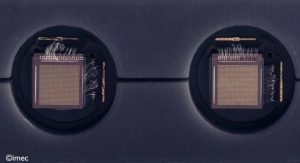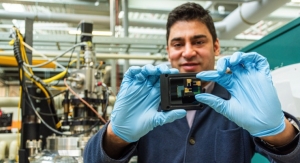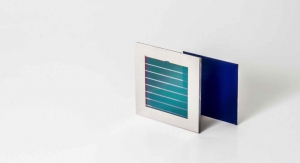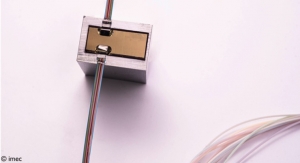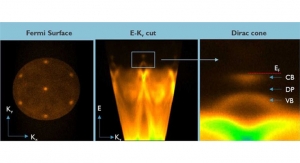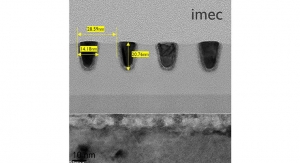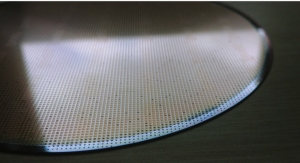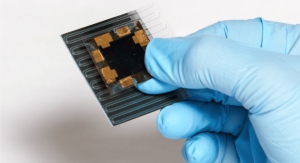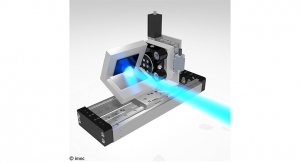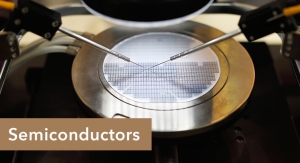David Savastano, Editor10.16.19
Cardiovascular disease is the leading global cause of death. According to the American Heart Association, cardiovascular disease was listed as the underlying cause of death in 840,678 deaths in the US in 2016, approximately one of every three deaths. Worldwide, cardiovascular disease was the cause of 17.6 million deaths in 2016.
Currently, heart ultrasound is used to determine cardiovascular health, and requires a visit to the doctor. A wearable device would allow people to monitor their health in real-time.
A spin-off of imec and KU Leuven, Pulsify Medical is looking to develop a solution for monitoring cardiovascular health. The start-up is developing noninvasive wearable ultrasound patches. With €2.6 million in seed funding, the company is on its way to its goal of monitoring hart health.
“Current therapeutic options are either invasive or can only be applied on a short-term basis and need to be operated by very skilled personnel,” said Iwan van Vijfeijken, the CEO of Pulsify Medical. “For example, the so-called Swan Ganz, Picco and Imacor products require catheters to be applied intravenously or via the esophagus. This is only possible in an ICU setting. Regular ultrasound options require a very skilled and experienced person to operate the ultrasound probe and interpret the results.
“Pulsify's solution will be the only continuously monitoring, safe and affordable product available for cardiologists to monitor patients on an ongoing basis, in an ICU, in a regular hospital setting, and at home,” he added. “In addition, athletes, especially those perform-ing endurance sports such as cycling and long-distance running, will benefit from this patch as well.”
van Vijfeijken noted that the concept is to use an array of ultrasound transducers on a flexible substrate to continuously monitor cardiac output and other related indicators of patients in the ICU and other clinical settings, adding that this concept can also be applied to monitor other vital organs, such as the bladder.
“The goal of Pulsify is to develop a novel type of ultrasound device, that is at the same time flexible, comes in a patch form that can be attached to the body and is able to automatically scan and detect physiological parameters inside the body. With this set of features, Pulsify has the ambition to evolve ultrasound from a diagnostic tool to a monitoring tool,” van Vijfeijken added.
“We will improve life quality, by preventing adverse events and allowing shorter hospital stays, and we will even save lives,” added Xavier Rottenberg, scientific director at imec and a co-founder of Pulsify along with Professor Jan D’hooge of KU Leuven and University Hospitals Leuven, Dr. Lieven Herbots of Jesse Hospital and University Hospitals Leuven, and Steve Stoffels of imec.
The start-up is utilizing imec’s flexible ultrasound transducer technology and thin-film transistors, as well as KU Leuven’s experience in cardiac ultrasound imaging.
“Imec is one of the world-leading research and innovation hub in nano-electronics and digital technologies,” van Vijfeijken said. “For Pulsify, it is leveraging its extensive know-how to develop a novel type of ultrasound chip, which is made of flexible materials and can be fabricated in a cost-effective way. Imec brings expertise on transducer design, fabrication and characterization into the project.
“The University of Leuven (KU Leuven) has world-class expertise on cardiac ultrasound imaging,” van Vijfeijken added. “It is bringing this expertise to Pulsify, delivering the algorithms and software to enable smart cardiac ultrasound imaging with the novel ultra-sound chip from imec. This includes algorithms for beam-forming the ultra-sound waves to optimize the signal intensity, reconstruction of the images from the ultrasound signals and automated extraction of physiological parameters from the images.”
van Vijfeijken noted that there are challenges that still have to be overcome, and Pulsify is targeting commercialization of its flexible patch in a few years.
“One of the key challenges for the Pulsify system is the flexible and large-area flexible transducer chip. Currently, no such chip is available in the market,” van Vijfeijken said. “Pulsify is working together with imec to develop such a chip, specific for the application and the requirements needed to allow continuous monitoring of cardiac output.”
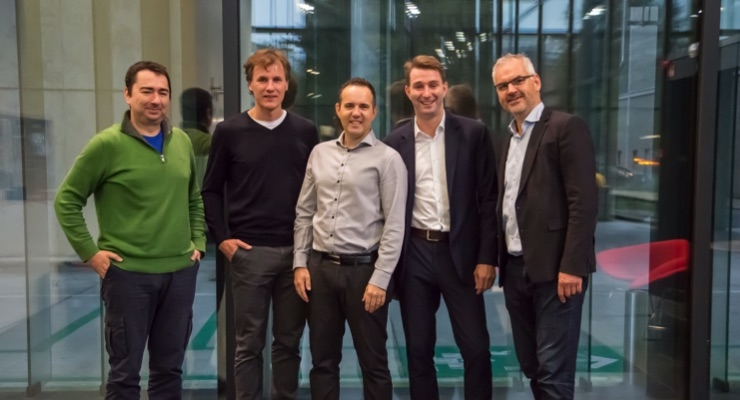
From left, Xavier Rottenberg, (scientific director imec), Jan d'Hooge (prof. UZ Leuven), Steve Stoffels (VP technology Pulsify Medical), Lieven Herbots (cardiologist Jessa Hospital Hasselt, Belgium and medical advisor to Pulsify Medical), and Iwan van Vijfeijken (CEO Pulsify Medical). (Source: Pulsify Medical)
Currently, heart ultrasound is used to determine cardiovascular health, and requires a visit to the doctor. A wearable device would allow people to monitor their health in real-time.
A spin-off of imec and KU Leuven, Pulsify Medical is looking to develop a solution for monitoring cardiovascular health. The start-up is developing noninvasive wearable ultrasound patches. With €2.6 million in seed funding, the company is on its way to its goal of monitoring hart health.
“Current therapeutic options are either invasive or can only be applied on a short-term basis and need to be operated by very skilled personnel,” said Iwan van Vijfeijken, the CEO of Pulsify Medical. “For example, the so-called Swan Ganz, Picco and Imacor products require catheters to be applied intravenously or via the esophagus. This is only possible in an ICU setting. Regular ultrasound options require a very skilled and experienced person to operate the ultrasound probe and interpret the results.
“Pulsify's solution will be the only continuously monitoring, safe and affordable product available for cardiologists to monitor patients on an ongoing basis, in an ICU, in a regular hospital setting, and at home,” he added. “In addition, athletes, especially those perform-ing endurance sports such as cycling and long-distance running, will benefit from this patch as well.”
van Vijfeijken noted that the concept is to use an array of ultrasound transducers on a flexible substrate to continuously monitor cardiac output and other related indicators of patients in the ICU and other clinical settings, adding that this concept can also be applied to monitor other vital organs, such as the bladder.
“The goal of Pulsify is to develop a novel type of ultrasound device, that is at the same time flexible, comes in a patch form that can be attached to the body and is able to automatically scan and detect physiological parameters inside the body. With this set of features, Pulsify has the ambition to evolve ultrasound from a diagnostic tool to a monitoring tool,” van Vijfeijken added.
“We will improve life quality, by preventing adverse events and allowing shorter hospital stays, and we will even save lives,” added Xavier Rottenberg, scientific director at imec and a co-founder of Pulsify along with Professor Jan D’hooge of KU Leuven and University Hospitals Leuven, Dr. Lieven Herbots of Jesse Hospital and University Hospitals Leuven, and Steve Stoffels of imec.
The start-up is utilizing imec’s flexible ultrasound transducer technology and thin-film transistors, as well as KU Leuven’s experience in cardiac ultrasound imaging.
“Imec is one of the world-leading research and innovation hub in nano-electronics and digital technologies,” van Vijfeijken said. “For Pulsify, it is leveraging its extensive know-how to develop a novel type of ultrasound chip, which is made of flexible materials and can be fabricated in a cost-effective way. Imec brings expertise on transducer design, fabrication and characterization into the project.
“The University of Leuven (KU Leuven) has world-class expertise on cardiac ultrasound imaging,” van Vijfeijken added. “It is bringing this expertise to Pulsify, delivering the algorithms and software to enable smart cardiac ultrasound imaging with the novel ultra-sound chip from imec. This includes algorithms for beam-forming the ultra-sound waves to optimize the signal intensity, reconstruction of the images from the ultrasound signals and automated extraction of physiological parameters from the images.”
van Vijfeijken noted that there are challenges that still have to be overcome, and Pulsify is targeting commercialization of its flexible patch in a few years.
“One of the key challenges for the Pulsify system is the flexible and large-area flexible transducer chip. Currently, no such chip is available in the market,” van Vijfeijken said. “Pulsify is working together with imec to develop such a chip, specific for the application and the requirements needed to allow continuous monitoring of cardiac output.”

From left, Xavier Rottenberg, (scientific director imec), Jan d'Hooge (prof. UZ Leuven), Steve Stoffels (VP technology Pulsify Medical), Lieven Herbots (cardiologist Jessa Hospital Hasselt, Belgium and medical advisor to Pulsify Medical), and Iwan van Vijfeijken (CEO Pulsify Medical). (Source: Pulsify Medical)


